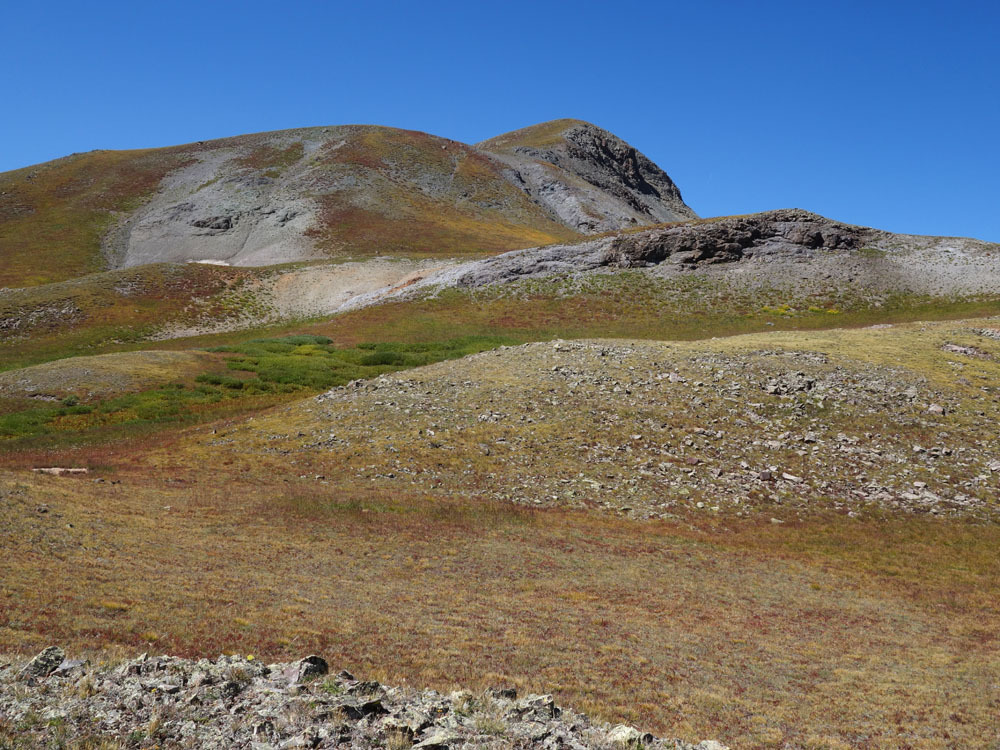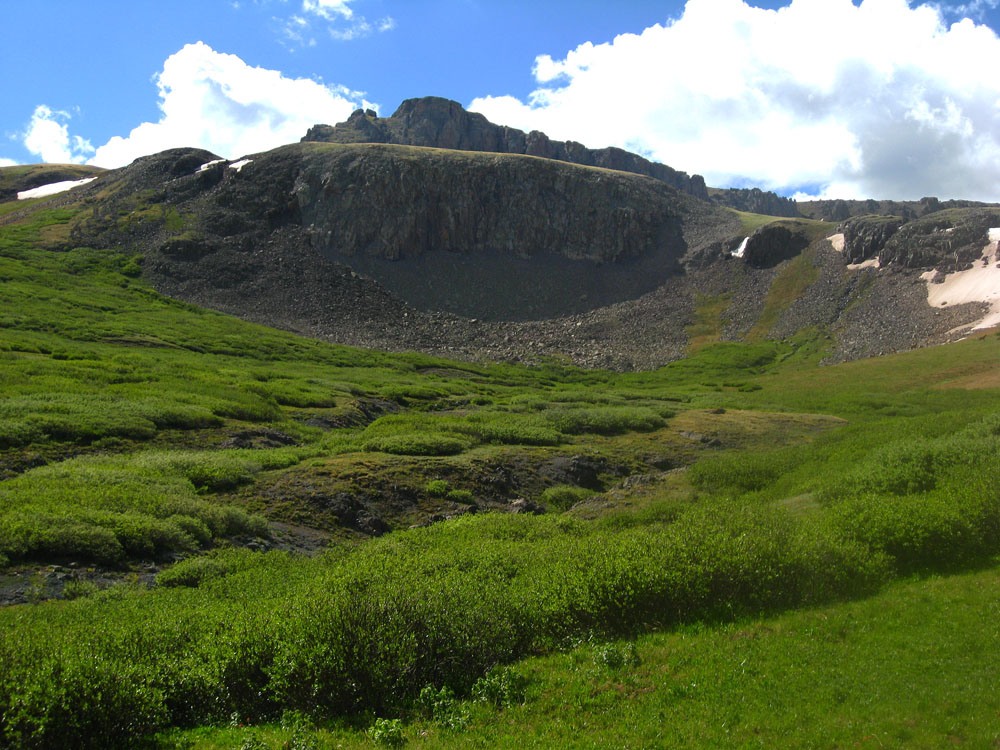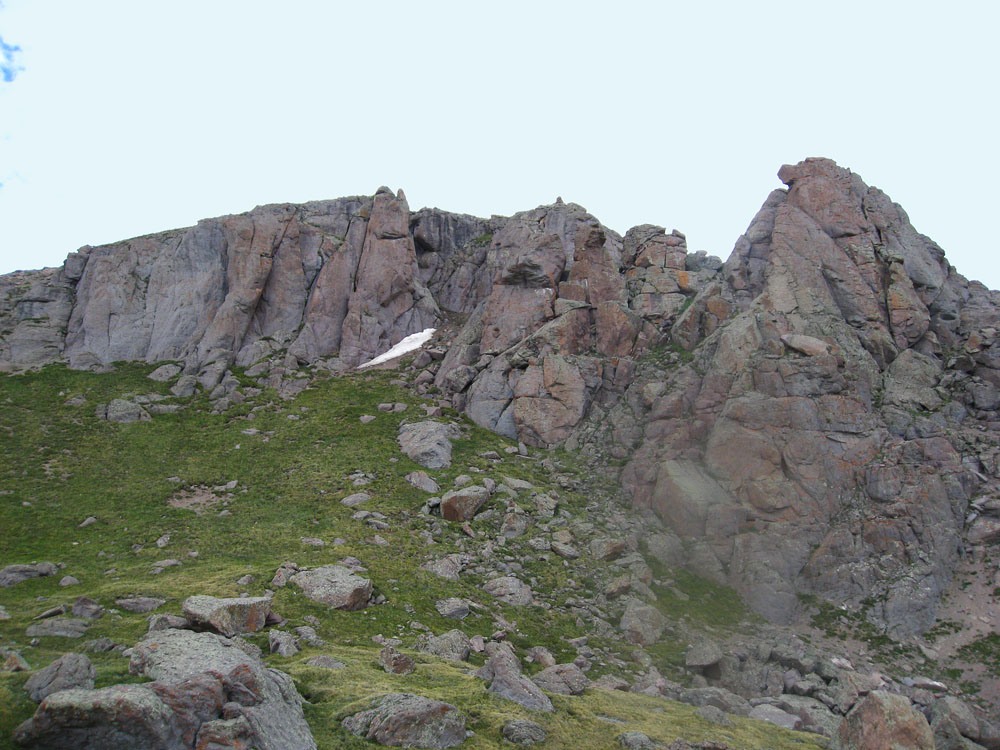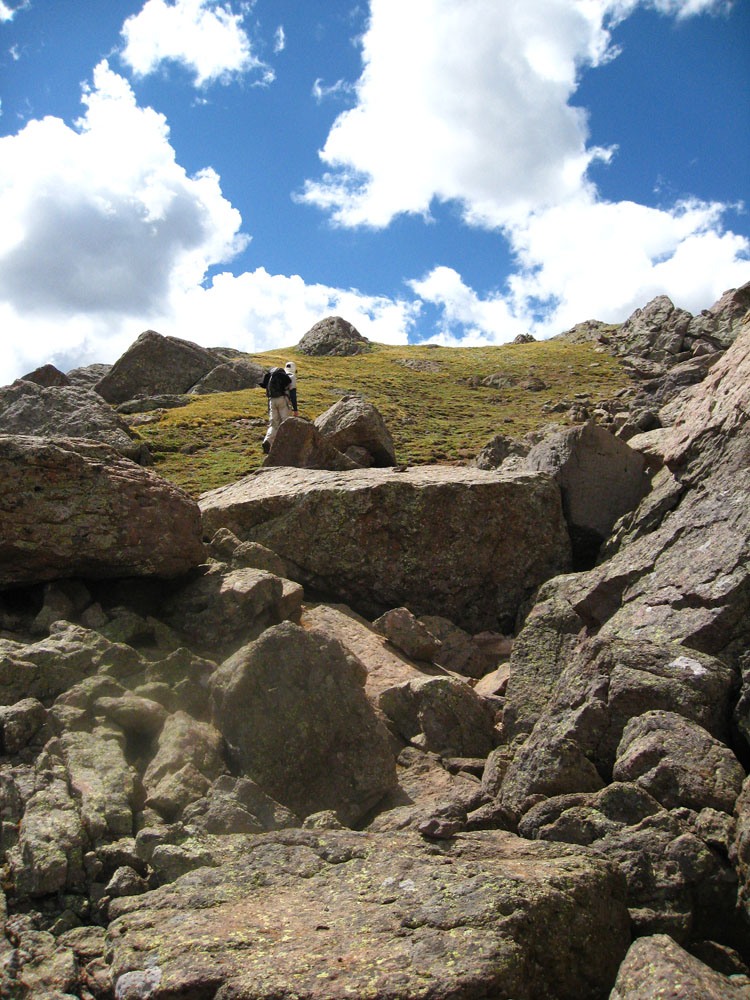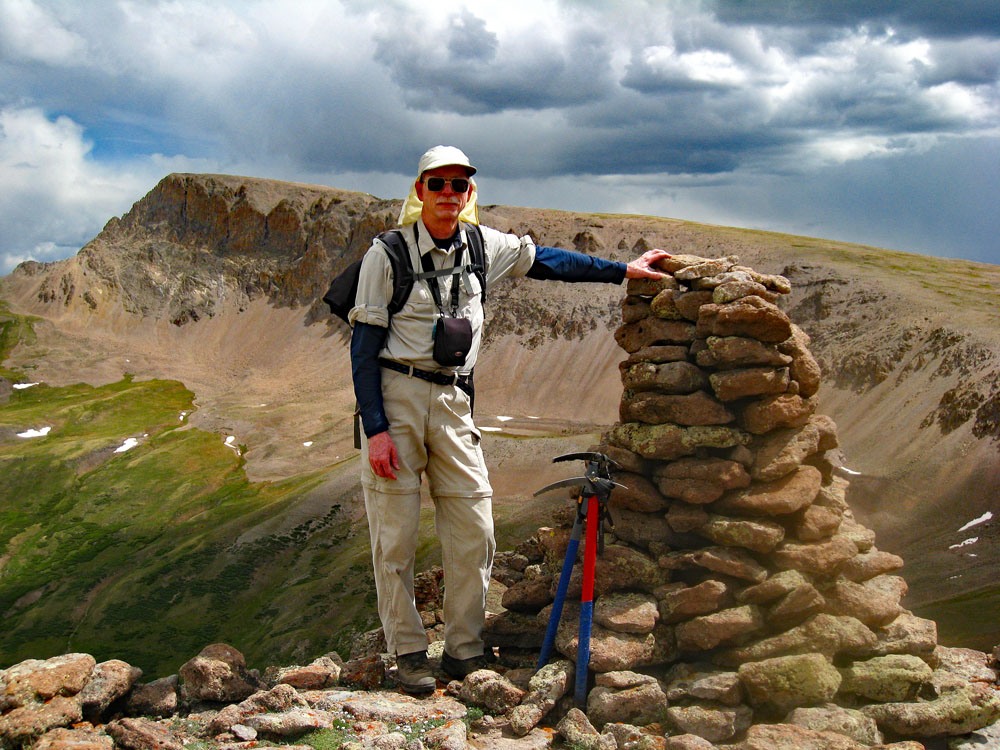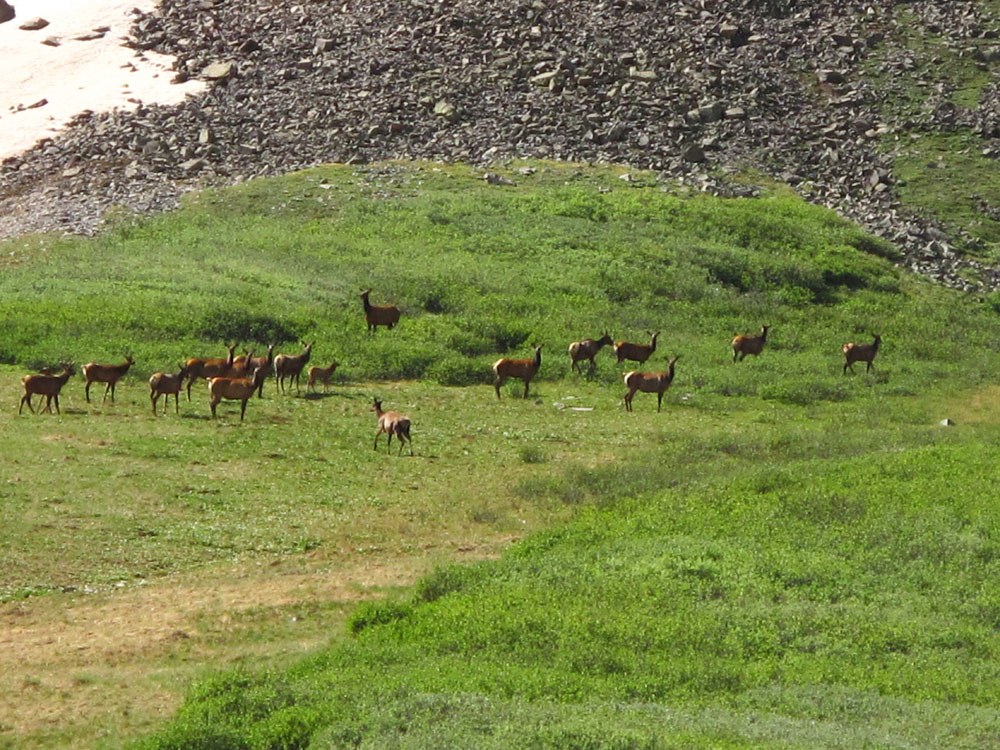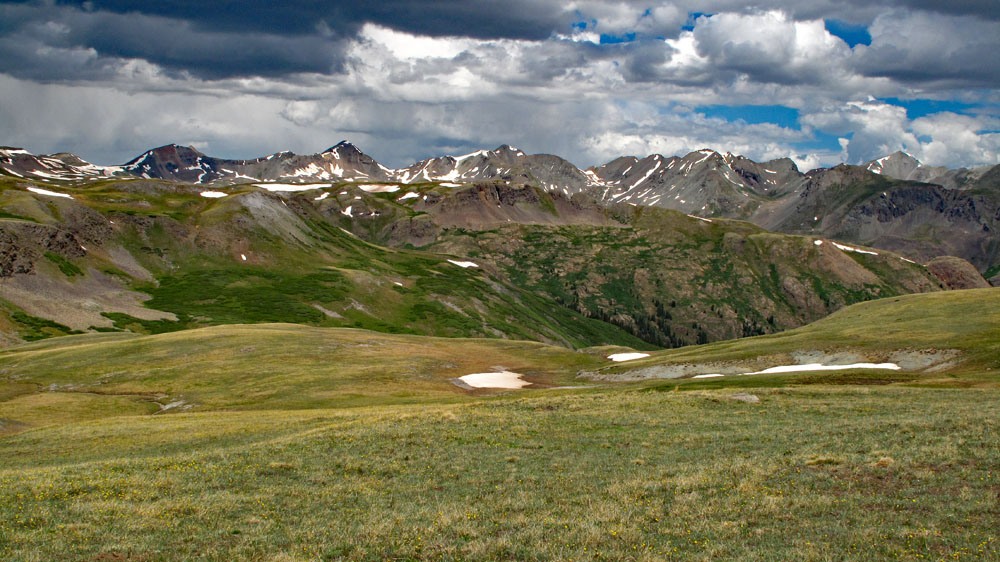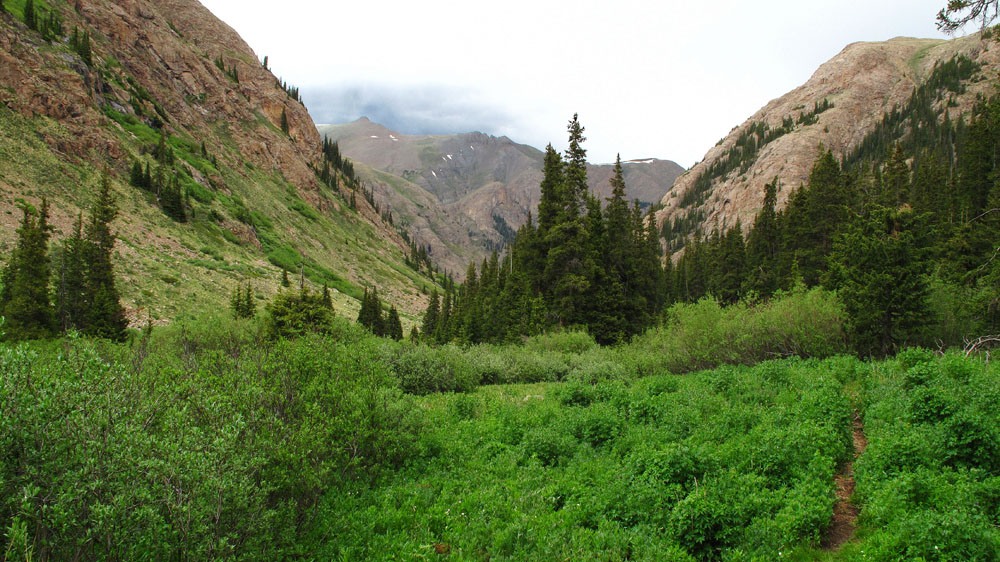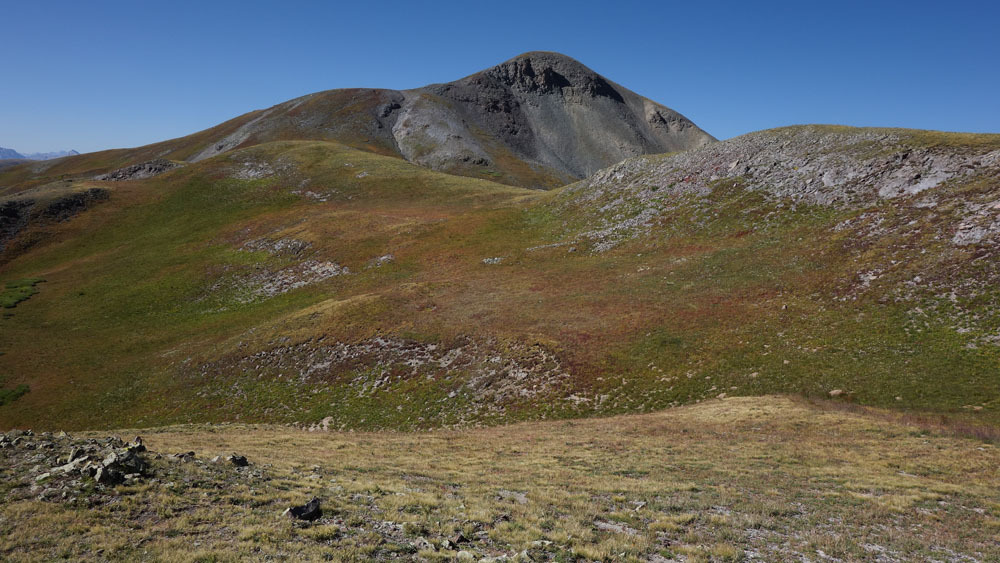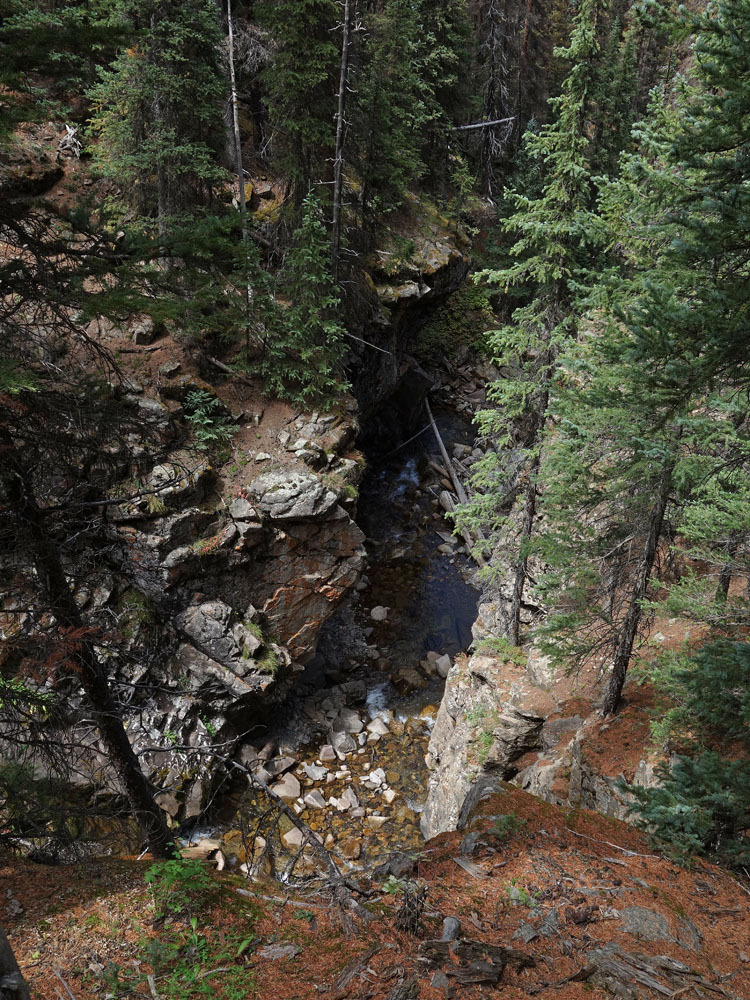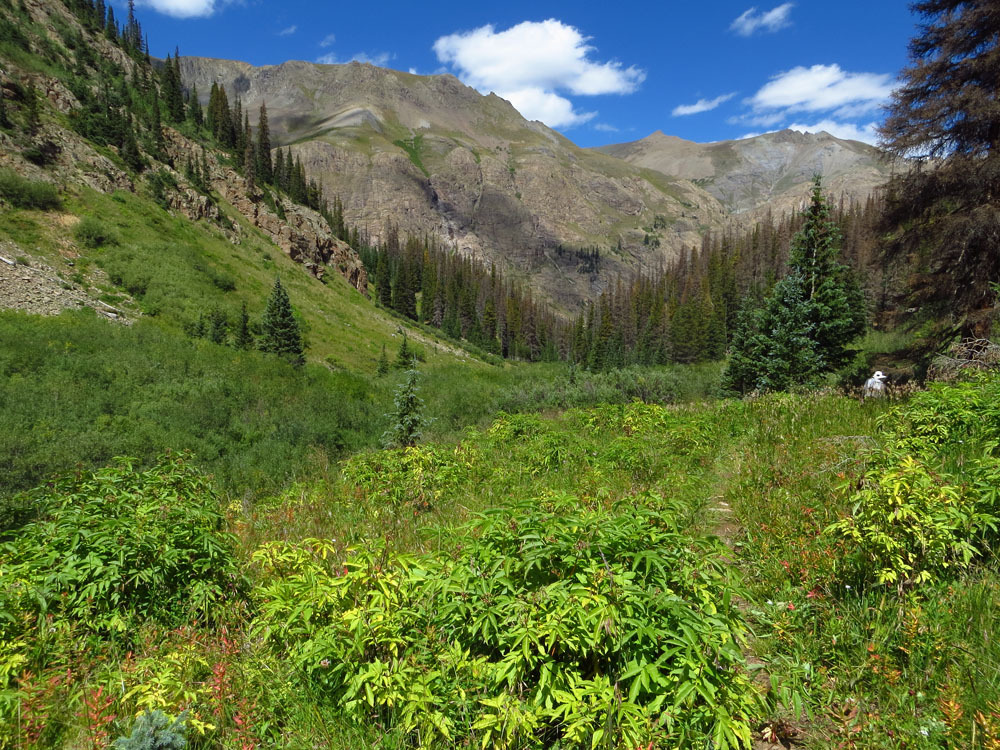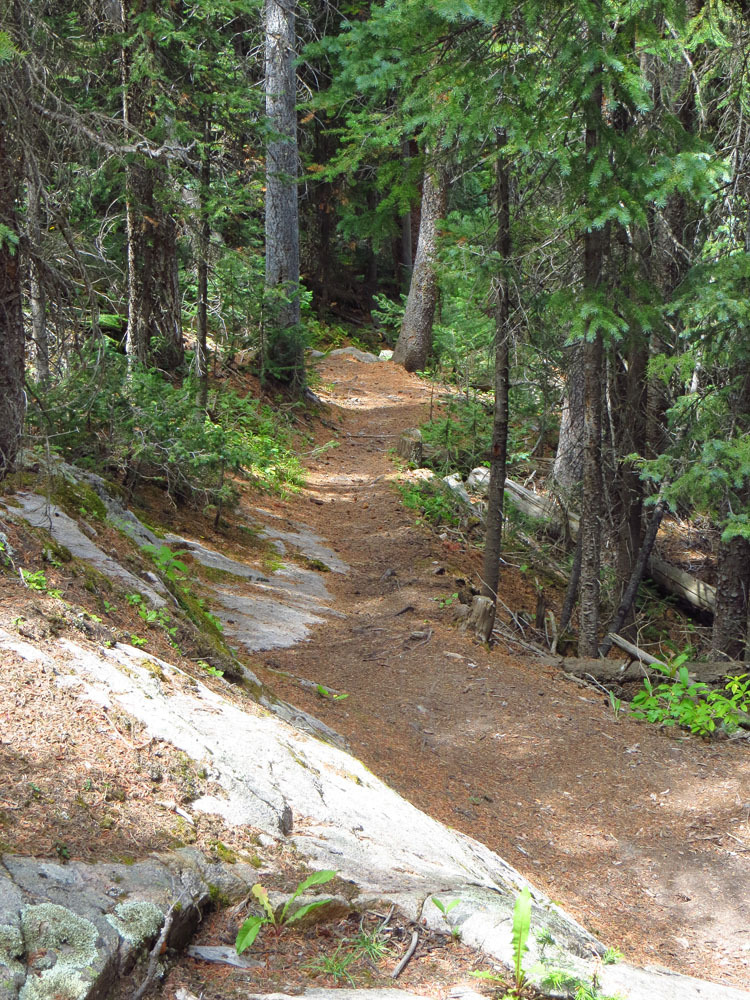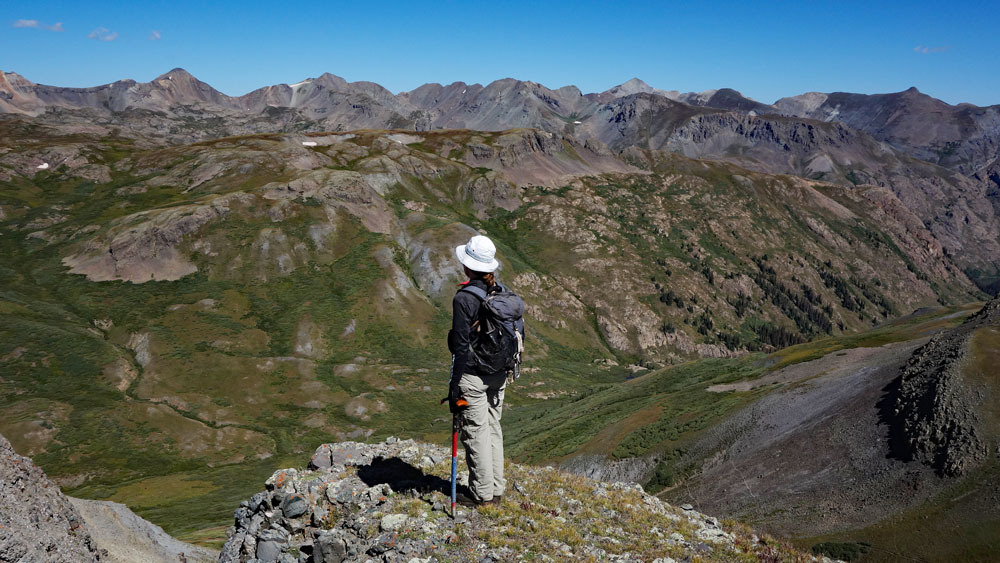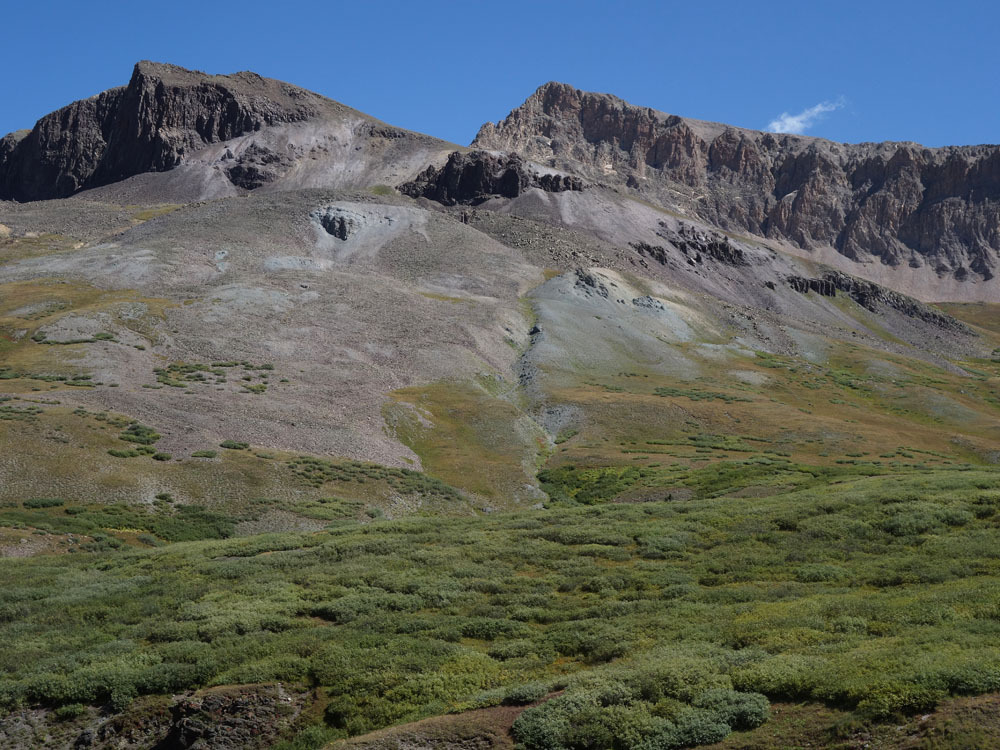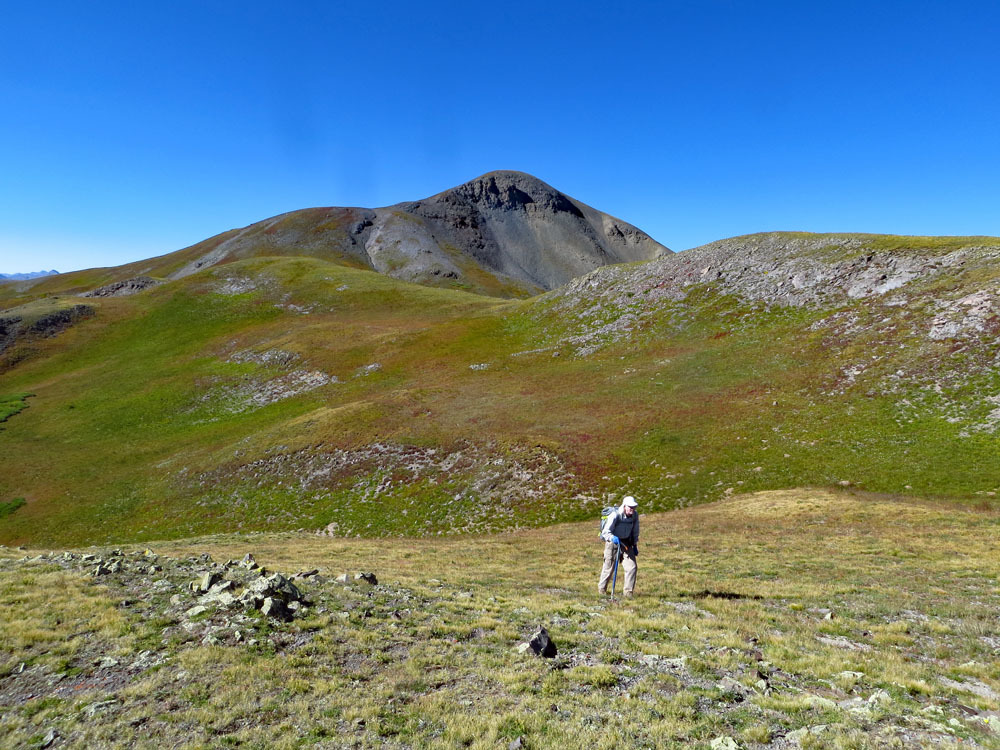LoJ: #634 (Pre-LiDAR: NR) / 13,003' UN 13003 Formerly UN 12990
Peak Summary
A Class 2 ascent with an approach that is best made in 4WD with good clearance up Cuba Gulch and a trail that gets lost in willows for a while before re-emerging in tundra terrain. The USGS Pole Creek map shows elevation as 12,990 ft. Lidar has placed it into the ranks of the 13ers with an elevation of 13,003 ft. This summit is sequenced with UN 13179 (formerly 13164) for a nice day-hike that should get most back by early to mid-afternoon. Good chance of seeing some wild game here.
UN 13003 SE Ridge Route
-
Trailhead
Approach Map Photos
-
Cuba Gulch TH
From Lake City, proceed south on HWY 149 and take the turnoff to the right (south) for Lake San Cristobal a little over 2 miles out of town and after gaining some elevation. Continue south around the lake on the west side and follow CR3 (BLM 3306; CR30 on Trails Illustrated #141) past the Williams Creek, then the Mill Creek (13.2 miles from Lake City) campgrounds to the road intersection at Sherman. (1.2 miles past the Mill Creek CG) The right fork heads up to the trailhead for Handies/Sunshine/Redcloud, etc. along what is called the "Shelf Road," which is also the way to Cinnamon Pass. Take the left fork instead which is CR35 or BLM 3309, remaining in the low valley following Cottonwood Creek and drive 1.5 mile to the trailhead for Cataract Gulch. To this point, the road may be driven by most standard type passenger vehicles as of 2014.
Continue on the same road for another 3.5 miles to the Cuba Gulch TH. The remainder of this distance is best navigated by 4WD vehicles with better ground clearance. After the Cataract Gulch TH, the road becomes immediately rougher and rocky. About .8 mile from the end of the road at Cuba Gulch TH, there is a good camp spot. See coordinates below. One tenth mile beyond there is an old abandoned, shot-up vehicle. From there, it's .7 mile to the end of the road. There is also good camping and plenty of room there, but of the two times we've been to the end, on one occasion, there were two large hunting parties camped there at the end of August. The trail starts out by crossing the creek on a log bridge. Hopefully the logs are still there. On our drive up this road in 2010, along that last .7 mile, a portion of the road constricted quite a bit because of tall willows that were draped over the road and would scratch your vehicle. On a return trip in 2014, someone had come in there with some sort of machine that had cut all those willows back and made the road much more passable. Nice to see some maintenance done on one of these more remote roads.
Camping
Camp either at the trailhead (see coordinates above) or try this location about .8 mile from the end of the road at the coordinates below. Camping is also available at the Cataract Gulch TH or you can always try to use the Williams Creek or Mill Creek FS campgrounds on the drive in.
Campsite Locations
Cuba Gulch › N 37° 53' 23.84", W 107° 28' 29.31"Elevation 10,630 ft.
-
From UN 13179
Click thumbnail to view full-size photo + caption
Open This Route in a New WindowThe trail #477 is well marked and it leads across the creek on a log bridge and continues through the open forest for a short distance before starting to climb uphill. The trail enters an interesting forested area where there is a jumble of downed trees. The survey map suggests this was the result of avalanche activity, but it almost looked like a blow down. Hike on up through the debris and begin a fairly steep ascent uphill.
Above the jumbled mass of fallen trees, the trail crosses yet another stream – this one draining Cuba Gulch, on a solidly built bridge over a very narrow and deep gorge. Above the gorge, the trail switchbacks up the hillside and then follows well above the stream, still entrenched in a spectacular gorge. Continue hiking on the easy trail for almost an hour (1.75 miles) until you come to a crossing of a nameless stream that is split into two flows. There is an excellent campsite here that could accommodate multiple tents. The unnamed stream drains the basin you are heading for. It lies SW of Half Peak. Note that while the old USGS map seems to indicate the Cuba Gulch trail crosses the creek a couple times, we found that it always stays on the same (east) side. Cross the split stream and locate the trail that heads south, up the unnamed drainage to a pass on the west side of your intended summit, between it and UN13,003. This trail shows on Trails Illustrated #141 as FS #916. It is not all that well-maintained if any. While these following coordinates are not field obtained, they may help locate within about 50 yards where this trail is: N 37° 51' 49.73" W 107° 29' 30.98". Elevation 11,470 ft. The same trail continues on to the North Fork of Pole Creek.
As the map indicates, the trail climbs steeply at first through trees and on switchbacks before turning on up the drainage. Before entering the drainage, it crosses a ridge. Aim for these coordinates at 11,900 ft.: N 37° 51' 40.01 W 107° 29' 21.20". As the trees thin out, it enters an extensive area of willows where we eventually lost it for a while before finding it again as the willows thinned out. After crossing the ridge, if you don't find it immediately, aim for these coordinates - just a short distance from crossing the ridge: N 37° 51' 39.21" W 107° 29' 19.70". Continue hiking up the valley and somewhere around the 12,000 foot level, begin to veer off and head more directly toward your summit.
As we headed up out of the willows, we spotted a group of cow elk and their calves grazing further up on the slopes of the peak. Because of a small, concealing rise we were able to get fairly close before being detected, but eventually, they ran by heading over to the pass where the trail goes. This is prime elk habitat and the willows are laced with their trails which contribute to the route finding difficulties getting through them. The north face of the peak presents a substantial cliff with a few breaks. It is now closer to veer to the west side of the peak so we walked that way, heading toward a well-used sheep trail that was marked with large rock cairns built up several feet that the shepherds have made. On the USGS map this is identified as the "East Fork Middle Pole Trail." It connects with and is a part of the CD/Colorado Trail. We intersected and followed the trail a little before continuing on uphill and heading around the cliffs to the west side of the peak. On the back (south) side, ascend easily through some rocky outcrops to a tundra and rock bench area just below the rocky summit.
The summit is capped by a large shepherd-built cairn with Half Peak as a backdrop. The view of Half is impressive and dominates the landscape. For the trip off the summit, we decided to head down the southwest ridge a little before entering a couloir that dropped through the cliffs to the NW. We found some interesting flowers to photograph as we descended and the building storm clouds to the north over the mountains made some nice photos. At the bottom of the couloir, we headed back down the easy tundra slopes and picked up the trail we had followed in the morning. This time we were able to follow more of it into the willows, but still lost it briefly before picking it back up again. The trick is that at one point, it actually goes uphill a little shortly before the descent back down into Cuba Gulch. It's also easy to lose the trail going back down into Cuba Gulch. Do not veer too far to the left (SW).
UN 12,990, which by Lidar is now UN 13003 lies just west of UN 13,179 and is an easy, almost all tundra ascent to a newly ranked 13er. Makes little sense to pass this one up and will add at the most an hour to your hiking day. We have sequenced these two summits together even though we climbed them at different times.
Route Map Photos
Route Info UN 13003 SE Ridge
Click thumbnail to view full-size photo + captionRoute Description
Year Climbed: 2014UN 13003 is sequenced with UN 13164. One-way mileage and elevation gain are measured from the summit of UN 13164. Round-trip mileage and elevation gain assume completion of the sequence.
From the summit of UN 13164, hike back downhill to the west and drop to the saddle that connects UN 13164 with UN 13003. This is largely on grass/tundra. Cross trail # 916 that heads south to the Pole Creek drainage and begin ascending up the SE ridge of UN 13003 on grass and tundra that thins down as you approach the summit. There are some sections of scree but nothing difficult. This is a fairly easy ascent, not too steep, with nice unfolding views of the surrounding sea of summits. Be careful not to get misdirected to Pt. 12,698. The true summit will be westward as you follow the ridge.
For the descent, either retrace your ascent path back to the saddle and follow the trail back north to the willows and the drop back down to Cuba Gulch, or you can take a more direct descent down into the valley on the east side, but don't swing too far north or you'll encounter some cliffs. The challenge to getting back to Cuba Gulch will be finding your way back down through the willows and then making the steep descent past the willows down into the forest. It's difficult to stay on the trail so make careful note of how you ascended. Place cairns, use your GPX track from the ascent (but only if you managed to stay on route), and watch the trail carefully. If you get off route, descent can lead you into some very steep sections with minor cliff bands to navigate.
Additional BETA
Links to other information, routes & trip reports for this peak that may be helpful. -
